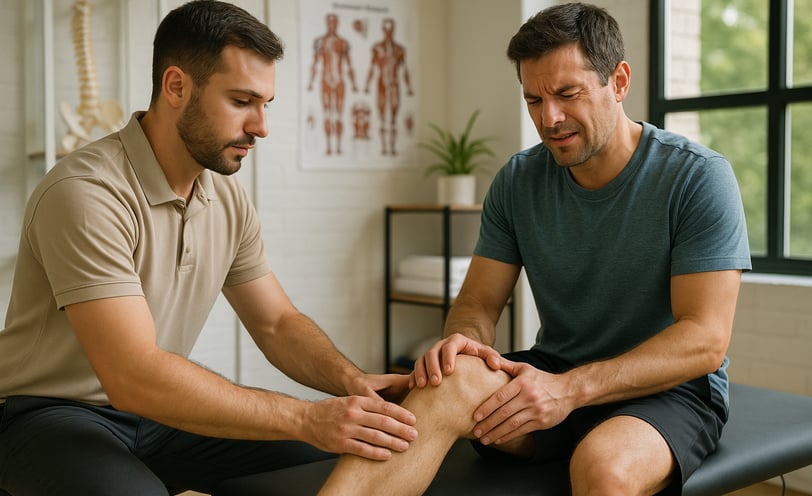Understanding and Managing Knee Pain: Causes, Prevention, and Treatment
Knee pain slowing you down? Learn the common causes, effective prevention tips, and reliable treatments to help ease your discomfort. From simple home remedies to advanced medical options, discover how you can regain mobility and enjoy an active, pain-free life.
Jason Lamendola PT
7/2/20252 min read


Introduction
Experiencing sore knees is common and usually not a cause for alarm. Knee pain can result from various issues, ranging from simple muscle strains (tendonitis) to arthritis. While many cases resolve with home remedies, persistent knee pain requires professional evaluation and care.
Common Causes of Knee Pain
Knee pain typically falls into three categories: injuries, overuse, and arthritis.
1. Injuries Knee injuries often result from accidents, sports, or sudden movements. Common knee injuries include:
Sprains and strains: Result from sudden twists or impacts.
Ligament tears (ACL/MCL): Caused by sharp movements or force, leading to swelling and instability.
Meniscus tears: Occur when the knee twists under weight.
Fractures: Breaks in knee bones from trauma or falls.
Patellar tendinitis: Inflammation of the tendon connecting the kneecap.
Bursitis: Inflammation of fluid-filled sacs cushioning the knee.
Iliotibial band syndrome: Irritation of the band from hip to knee.
Patellofemoral syndrome: Pain around the kneecap.
2. Overuse Repeated stress or prolonged physical activity can cause knee pain. Common overuse injuries include:
Osgood-Schlatter disease: Painful inflammation below the kneecap in growing adolescents.
Patellofemoral pain syndrome (PFPS): Generalized kneecap pain.
Patellar tendinitis: Often seen in athletes due to repetitive strain.
Bursitis: Caused by frequent kneeling or repetitive knee motions.
3. Arthritis Arthritis-related knee pain involves joint inflammation. Types include:
Osteoarthritis: Wear-and-tear arthritis common with aging.
Rheumatoid arthritis: Autoimmune condition causing inflammation.
Post-traumatic arthritis: Arthritis following a knee injury.
Preventing Knee Pain
You can reduce the risk of knee pain with these preventive measures:
Warm-Up and Cool Down: Regular stretching before and after activities.
Proper Footwear: Wear supportive, comfortable shoes; consider orthotics.
Maintain a Healthy Weight: Losing excess weight reduces knee stress.
Balanced Diet: Eat anti-inflammatory foods (fish, nuts, vegetables) and limit foods high in sugar and fats.
Treatment Options for Knee Pain
Effective treatments include home remedies and professional interventions:
1. Home Care: RICE Method
Rest: Minimize activities causing pain.
Ice: Apply ice for 20 minutes hourly after injury.
Compression: Use elastic bandages to support the knee and reduce swelling.
Elevation: Keep the knee elevated above heart level when resting.
2. Knee Braces Braces support and stabilize the knee, aligning it to prevent further injury.
3. Physical Therapy A personalized exercise and stretching regimen helps strengthen knee muscles, improve flexibility, and reduce pain.
4. Surgical Intervention In severe cases, surgery may be necessary to repair significant damage, including fractures or severe ligament and cartilage injuries.
If you've been experiencing ongoing knee pain that hasn't improved with home remedies or lasts longer than expected, it's important to seek professional care. At TLC Physical Therapy, our skilled therapists can help identify the source of your knee pain, provide effective treatments, and guide you through personalized exercises to restore your mobility and comfort. Don’t let knee pain hold you back—take the first step toward relief today.
